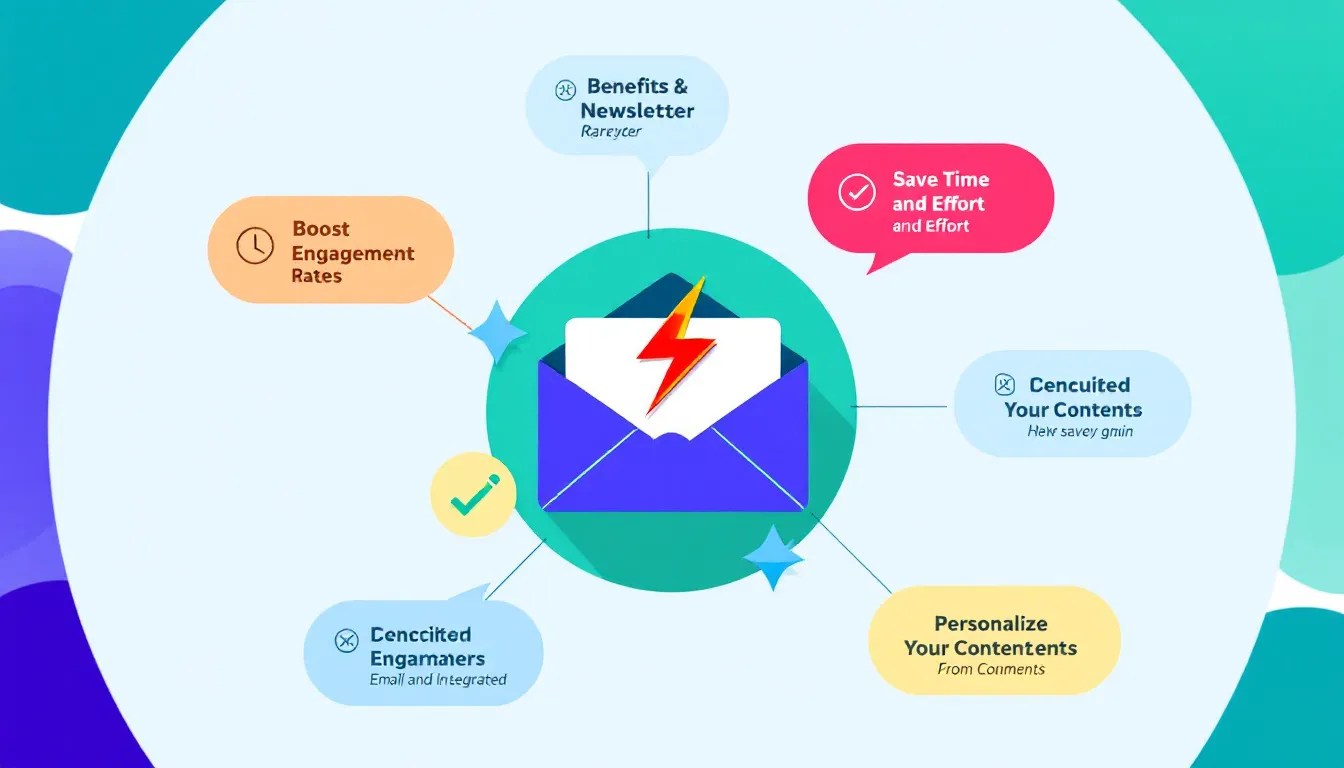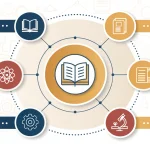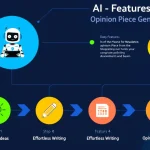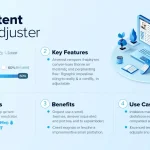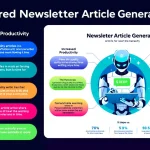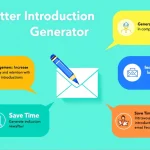Is this tool helpful?
How to Use the Email Newsletter Generator Effectively
Our Email Newsletter Generator is designed to help you create engaging and effective email newsletters tailored to your specific audience and goals. Follow these steps to make the most of this powerful tool:
- Target Audience: Enter the specific group you’re addressing. For example, “Freelance graphic designers” or “Health-conscious millennials.”
- Newsletter Topic: Specify the main focus of your email. This could be “Latest design software updates” or “Plant-based protein sources.”
- Desired Action: Clearly state what you want readers to do after reading your newsletter. Examples include “Register for a virtual design conference” or “Download our new recipe e-book.”
- Key Points (Optional): List 3-5 main ideas or pieces of information you want to include. This helps structure your newsletter content.
- Brand Tone (Optional): Describe the voice that aligns with your brand, such as “Casual and approachable” or “Authoritative and informative.”
After filling in these details, click the “Generate Email Newsletter” button. The tool will create a customized newsletter based on your inputs, which you can then review, edit, and use as a foundation for your email campaign.
Understanding the Power of Email Newsletters in Digital Marketing
Email newsletters are a cornerstone of modern digital marketing strategies, offering a direct line of communication between businesses and their audience. Our Email Newsletter Generator is designed to streamline the creation process, helping marketers craft compelling content that resonates with their target audience and drives desired actions.
What is an Email Newsletter?
An email newsletter is a regularly distributed email communication sent to subscribers who have opted to receive updates from a business or organization. These newsletters typically contain a mix of informative content, promotional offers, and calls-to-action (CTAs) designed to engage readers and encourage specific behaviors.
The Purpose of Email Newsletters
The primary purposes of email newsletters include:
- Keeping subscribers informed about company news, product updates, or industry trends
- Nurturing relationships with existing customers and prospects
- Driving traffic to a website or landing page
- Promoting products, services, or special offers
- Establishing thought leadership and brand authority
- Encouraging engagement and fostering community
The Benefits of Using an Email Newsletter Generator
Our Email Newsletter Generator offers numerous advantages for marketers and businesses:
- Time-saving: Quickly create newsletter content without starting from scratch
- Consistency: Maintain a consistent tone and structure across your email campaigns
- Customization: Tailor content to specific audience segments and goals
- Inspiration: Generate fresh ideas and overcome writer’s block
- Optimization: Incorporate best practices for email marketing automatically
- Scalability: Easily create multiple newsletter variations for different segments or campaigns
Key Benefits of Effective Email Newsletters
When crafted thoughtfully using tools like our Email Newsletter Generator, email newsletters can yield significant benefits for businesses and organizations:
1. Enhanced Customer Engagement
Regular, valuable newsletter content keeps your audience engaged with your brand between purchases or interactions. This ongoing engagement helps build brand loyalty and increases the likelihood of future conversions.
2. Increased Website Traffic
By including links to your website content, product pages, or blog posts, newsletters can drive significant traffic to your online properties. This increased traffic can lead to higher search engine rankings and more opportunities for conversion.
3. Improved Brand Awareness and Recall
Consistent presence in subscribers’ inboxes keeps your brand top-of-mind. Even if recipients don’t open every email, seeing your brand name regularly reinforces brand awareness and recall.
4. Cost-Effective Marketing
Compared to many other marketing channels, email newsletters are extremely cost-effective. Once you’ve built a subscriber list, the cost per contact is minimal, making it an efficient way to reach a large audience.
5. Measurable Results
Email marketing platforms offer robust analytics, allowing you to track open rates, click-through rates, conversions, and other key metrics. This data helps you refine your strategy and improve future campaigns.
6. Personalization Opportunities
Email newsletters can be easily segmented and personalized based on subscriber data, allowing you to deliver more relevant content to different audience segments. This personalization can significantly increase engagement and conversion rates.
Addressing User Needs with the Email Newsletter Generator
Our Email Newsletter Generator is designed to address common challenges faced by marketers and content creators when developing email campaigns. Here’s how it solves specific problems:
1. Overcoming Writer’s Block
Many marketers struggle with coming up with fresh, engaging content for their newsletters. By providing a framework and generating ideas based on your inputs, our tool helps overcome writer’s block and sparks creativity.
2. Maintaining Consistency
Consistency in tone, style, and messaging is crucial for brand building. The Email Newsletter Generator helps maintain this consistency by incorporating your specified brand tone and key messages into each newsletter.
3. Optimizing for Mobile Devices
With a growing number of users checking emails on smartphones, mobile optimization is crucial. Our generator creates newsletter content that’s easily readable on mobile devices, ensuring a positive user experience across all platforms.
4. Improving Open Rates
The tool helps create compelling subject lines that entice recipients to open your emails. By focusing on your specified topic and target audience, it generates subject lines that resonate with your subscribers and boost open rates.
5. Enhancing Click-Through Rates
By incorporating clear calls-to-action and structuring content to maintain reader interest, the Email Newsletter Generator helps improve click-through rates, driving more traffic to your desired destinations.
6. Saving Time and Resources
Creating high-quality newsletter content can be time-consuming. Our tool streamlines the process, allowing you to generate a solid foundation for your newsletter quickly, which you can then refine and customize as needed.
Practical Applications and Use Cases
The Email Newsletter Generator can be applied to various industries and use cases. Here are some examples to illustrate its versatility:
1. E-commerce Product Launches
An online fashion retailer could use the tool to create a newsletter announcing a new summer collection:
- Target Audience: Fashion-forward women aged 25-40
- Topic: Summer 2023 Collection Launch
- Desired Action: Shop the new collection
- Key Points: Sustainable materials, exclusive pre-order discounts, celebrity collaborations
- Brand Tone: Trendy and aspirational
The generated newsletter would highlight the key features of the new collection, showcase popular items, and include a prominent CTA to browse and purchase the new arrivals.
2. B2B Thought Leadership
A software company could use the generator to create a newsletter establishing their expertise in artificial intelligence:
- Target Audience: IT decision-makers in Fortune 500 companies
- Topic: AI trends shaping enterprise software
- Desired Action: Download a whitepaper on AI implementation
- Key Points: Machine learning applications, data privacy considerations, ROI of AI adoption
- Brand Tone: Professional and innovative
The resulting newsletter would provide valuable insights into AI trends, position the company as a thought leader, and encourage readers to download the whitepaper for more in-depth information.
3. Nonprofit Donor Engagement
A wildlife conservation organization could use the tool to create a newsletter updating donors on their impact:
- Target Audience: Individual donors and supporters
- Topic: Quarterly impact report and upcoming initiatives
- Desired Action: Make an additional donation
- Key Points: Number of animals rescued, habitat restoration progress, new conservation projects
- Brand Tone: Passionate and grateful
The generated newsletter would highlight the organization’s achievements, share success stories, and provide a clear path for donors to contribute to upcoming projects.
4. Educational Institution Alumni Outreach
A university could use the Email Newsletter Generator to create an engaging update for alumni:
- Target Audience: University alumni from the last 20 years
- Topic: Campus developments and alumni success stories
- Desired Action: Register for the annual alumni weekend
- Key Points: New research breakthroughs, campus expansion projects, notable alumni achievements
- Brand Tone: Proud and community-oriented
The newsletter would showcase the university’s recent accomplishments, highlight successful alumni, and build excitement for the upcoming alumni weekend, encouraging registrations.
Frequently Asked Questions
1. How often should I send email newsletters?
The ideal frequency depends on your audience and content. Generally, sending newsletters weekly or bi-weekly is effective for most businesses. However, some industries may benefit from more frequent communication, while others might opt for monthly updates. It’s essential to find a balance between staying top-of-mind and avoiding subscriber fatigue.
2. What’s the best time to send email newsletters?
Optimal send times can vary depending on your audience and industry. Generally, weekdays during business hours (Tuesday through Thursday, 10 AM to 2 PM) tend to perform well. However, it’s best to test different times and days to see what works best for your specific audience.
3. How can I improve my newsletter open rates?
To improve open rates:
- Craft compelling subject lines that create curiosity or offer value
- Personalize subject lines and content when possible
- Segment your audience to ensure relevance
- Maintain a consistent sending schedule
- Regularly clean your email list to remove inactive subscribers
4. What’s the ideal length for an email newsletter?
The ideal length depends on your content and audience. Generally, keeping newsletters concise (300-500 words) is effective for maintaining reader engagement. If you have more to share, consider using a “read more” link to direct readers to your website for the full content.
5. How can I grow my email subscriber list?
To grow your subscriber list:
- Offer valuable content or incentives for signing up
- Place sign-up forms prominently on your website
- Use social media to promote your newsletter
- Include sign-up options at events or in-store
- Run contests or giveaways that require email sign-up
- Use pop-ups or exit-intent forms on your website
6. How can I make my newsletters more engaging?
To increase engagement:
- Use a conversational tone that resonates with your audience
- Include visually appealing elements like images or infographics
- Personalize content based on subscriber preferences or behavior
- Ask questions or encourage replies to foster two-way communication
- Include interactive elements like polls or surveys
- Share user-generated content or customer stories
7. Should I use plain text or HTML for my newsletters?
Both plain text and HTML formats have their advantages. HTML allows for more visually appealing designs and can include images and formatting. Plain text can feel more personal and may have better deliverability rates. Consider using both: an HTML version with a plain text fallback to ensure all subscribers can view your content.
8. How can I measure the success of my email newsletters?
Key metrics to track include:
- Open rate: The percentage of recipients who open your email
- Click-through rate (CTR): The percentage of recipients who click on links in your email
- Conversion rate: The percentage of recipients who complete your desired action
- Bounce rate: The percentage of emails that weren’t delivered
- Unsubscribe rate: The percentage of recipients who opt out of future emails
- List growth rate: The rate at which your subscriber list is growing
9. How can I ensure my newsletters don’t end up in spam folders?
To improve deliverability:
- Use a reputable email service provider
- Avoid using spam trigger words in your subject lines and content
- Maintain a clean email list by regularly removing inactive subscribers
- Include an easy unsubscribe option in every email
- Encourage subscribers to add your email address to their contacts
- Use authentication protocols like SPF, DKIM, and DMARC
10. Can I use the Email Newsletter Generator for different types of businesses?
Yes, the Email Newsletter Generator is designed to be versatile and can be used for various types of businesses and organizations. Whether you’re a small local business, a large corporation, a nonprofit, or an educational institution, you can customize the inputs to match your specific needs and audience.
Important Disclaimer
The calculations, results, and content provided by our tools are not guaranteed to be accurate, complete, or reliable. Users are responsible for verifying and interpreting the results. Our content and tools may contain errors, biases, or inconsistencies. We reserve the right to save inputs and outputs from our tools for the purposes of error debugging, bias identification, and performance improvement. External companies providing AI models used in our tools may also save and process data in accordance with their own policies. By using our tools, you consent to this data collection and processing. We reserve the right to limit the usage of our tools based on current usability factors. By using our tools, you acknowledge that you have read, understood, and agreed to this disclaimer. You accept the inherent risks and limitations associated with the use of our tools and services.
